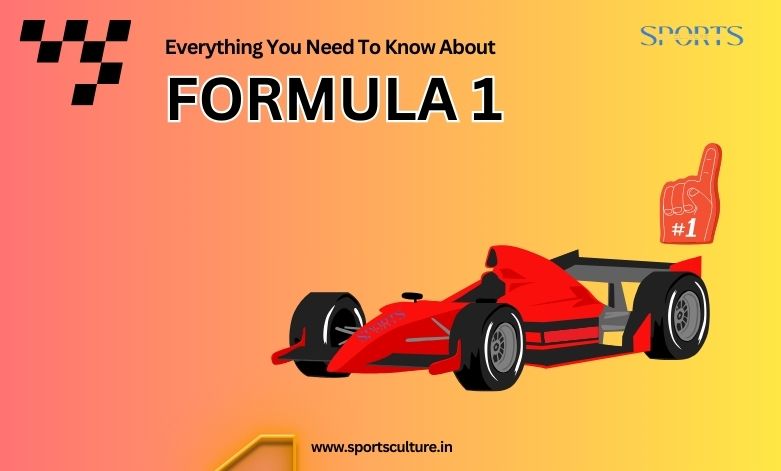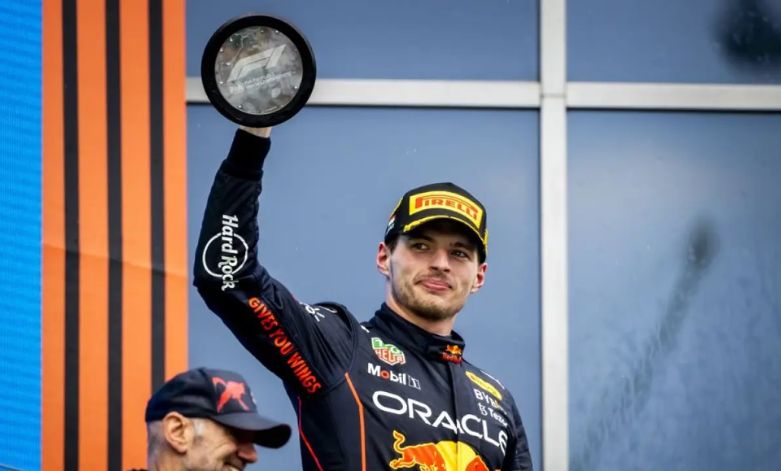What is formula 1: Everything You Need to Know

Formula 1, beyond being a sport, is a fusion of cutting-edge technology, tactical brilliance, and an unwavering pursuit of speed. This article serves as a gateway to the intricate world of Formula 1, answering the fundamental question that resonates with both enthusiasts and novices alike: What is Formula 1?
Formula 1, the pinnacle of motorsport, showcases cutting-edge features like the Drag Reduction System (DRS), enabling drivers to execute strategic overtaking maneuvers. In the realm of F1, the term “interval” assumes significance as it represents the time gap between competing cars, playing a crucial role in shaping strategic decisions during the race.
Within the intricate language of Formula 1, terms like “out lap” and “box” hold specific meanings. The “out lap” refers to the crucial phase after a pit stop, where drivers recalibrate their tire temperatures to optimize performance. Simultaneously, the term “box” is synonymous with the pit area, becoming the nerve center for rapid tire changes and essential adjustments to the racing machine.
In the dynamic and high-pressure environment of Formula 1, the acronym “DNF” conveys a sense of disappointment as it stands for “Did Not Finish.” This designation is assigned when a driver’s race concludes prematurely due to technical malfunctions, accidents, or other unforeseen circumstances.
Each race unfolds as a gripping drama with DRS-fueled overtakes, carefully calculated intervals, strategic out laps, pit stops, and the looming possibility of a DNF, adding layers of excitement and unpredictability to the competition.
Table of Contents
What Does DRS Mean in F1?
At the heart of Formula 1’s tactical racing lies the Drag Reduction System, or DRS. This innovative technology is designed to reduce aerodynamic drag on a car, enhancing its straight-line speed. When a driver is within one second of the car in front and on specific sections of the track, they can activate DRS, allowing for thrilling overtaking opportunities. DRS adds an extra layer of strategy, transforming races into strategic battles where timing and precision are paramount.
Must Read – Best Female WWE Wrestlers
What Does Interval Mean in F1?
In the dynamic world of Formula 1, the term “interval” holds the key to understanding the temporal dynamics of a race. The interval represents the time gap between two competing cars, a crucial metric displayed on timing screens. This real-time information provides insights into the ebb and flow of the race, allowing teams and spectators alike to gauge the competitive landscape. Monitoring intervals is integral to strategic decision-making, shaping the narrative of each race.
What Does Out Lap Mean in F1?
As the race unfolds, the “out lap” emerges as a pivotal phase for Formula 1 drivers. This lap occurs when a driver exits the pit lane, serving as a preparatory stage before rejoining the competitive fray. Beyond its apparent routine, the out lap involves crucial maneuvers to optimize tire and brake temperatures. The meticulous preparation during the out lap sets the stage for subsequent laps, influencing a driver’s overall performance on the track.
What Does Box Mean in F1?
“Box, box, box!” – a radio command that resonates through the high-tech world of Formula 1. In F1 parlance, “box” signifies a driver’s imperative entry into the pit lane for a pit stop. Pit stops are intricate choreographies involving tire changes, adjustments, and rapid-fire decisions. The timing and execution of pit stops inject an element of unpredictability into the race, often dictating the course of victory.
What Does DNF Mean in F1?
The acronym DNF, or “Did Not Finish,” casts a shadow of disappointment in the world of Formula 1. When a driver receives a DNF designation, it signifies their inability to complete the race due to various reasons such as mechanical failures or on-track incidents. In a sport where every race holds substantial points and championship implications, a DNF can be a harsh setback, impacting both individual aspirations and team dynamics.
Popular Article – Top online games 2023
Who Won Formula 1 Most?

Max Emilian Verstappen, a racing prodigy with Belgian and Dutch roots, stands tall as a three-time Formula One World Champion. Dominating the 2021, 2022, and 2023 seasons, Verstappen competes under the Dutch flag with Red Bull Racing. His meteoric rise to success adds a new chapter to the storied history of Formula 1, solidifying his status as one of the sport’s elite drivers.
What Country is Formula 1 From?
The origins of Formula 1 trace back to the pioneering road races in France during the 1890s. While the modern era officially began in 1950, the sport’s roots delve into a rich history encompassing the Edwardian years, the tumultuous twenties, the German dominance of the 1930s, and the post-war years marked by Italian supremacy. Formula 1, in its essence, transcends geographical boundaries, captivating audiences globally and evolving into a truly international spectacle.
Who is the Youngest Driver to Win an F1 Race?
Max Verstappen not only boasts multiple championships but also holds the distinction of being the youngest winner of a Formula 1 Grand Prix. At the tender age of 18 years and 228 days, Verstappen secured victory at the 2016 Spanish Grand Prix. This historic achievement showcases his prodigious talent and positions him as a trailblazer in the world of motorsport.
Conclusion: What is formula 1
In conclusion, Formula 1 is more than just a race; it’s a symphony of technology, strategy, and human skill. From the adrenaline-fueled overtakes facilitated by DRS to the strategic dance of pit stops, each element contributes to the allure of Formula 1. As Max Verstappen continues to etch his name in the annals of racing history, the sport itself evolves, captivating fans with its unrelenting speed and drama. Formula 1 is not just a sport; it’s a journey, and the thrill of the race continues to resonate across generations.
How does DRS work in Formula 1?
The Drag Reduction System (DRS) in Formula 1 is activated when a driver is within one second of the car in front and on specific sections of the track. It reduces aerodynamic drag, facilitating overtaking opportunities.
Why is monitoring intervals important in Formula 1?
Intervals represent the time gap between two cars, offering insights into the competitive landscape. Teams use this information for strategic decision-making during a race.
What is the significance of the out lap in Formula 1?
The out lap is crucial for preparing a car’s tires and brakes for competitive racing after exiting the pit lane. It sets the stage for optimal performance in subsequent laps.
What is the significance of the out lap in Formula 1?
The out lap is crucial for preparing a car’s tires and brakes for competitive racing after exiting the pit lane. It sets the stage for optimal performance in subsequent laps.
What happens during a pit stop in Formula 1?
A pit stop involves tire changes, adjustments, and sometimes repairs. It is a meticulously orchestrated process that adds an element of unpredictability to the race.
How does a DNF affect a driver’s standings in Formula 1?
A DNF (Did Not Finish) significantly impacts a driver’s championship standings, as they miss out on potential points from the race.
Who is the youngest and oldest winner of a Formula 1 Grand Prix?
Max Verstappen is the youngest winner at 18 years and 228 days (2016 Spanish Grand Prix), while Luigi Fagioli is the oldest at 53 years and 22 days (1951 French Grand Prix).

One Comment